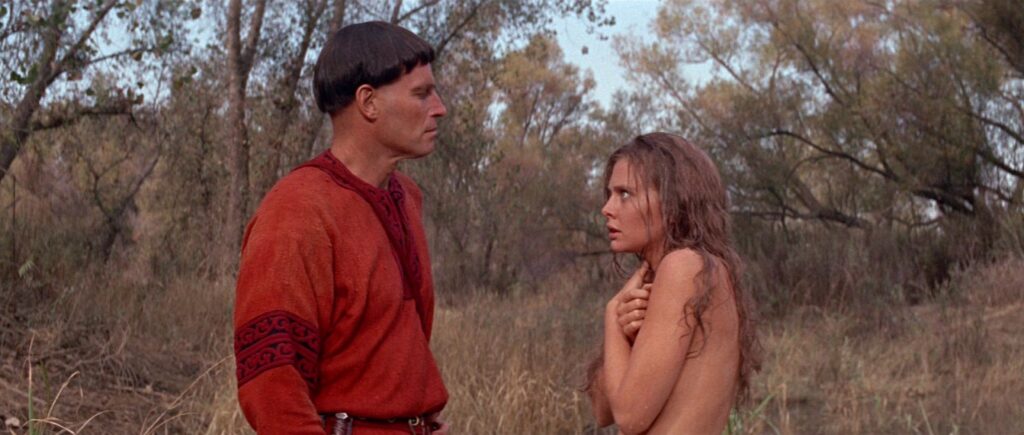
The War Lord (1965) is a historical epic caught between the romantic pageantry of Cecil B. DeMille when Henry Wilcoxon was a matinee idol and the kinetic brutality of the early modernist spectacle epitomized by Richard Fleischer’s The Vikings (1958). The War Lord is never wholly successful at achieving either aesthetic, but it does find some rather interesting common ground in those operatic moments when dialogue is dispensed with in favor of a moving camera, an intense expression, and a dramatic surge in the music. The cinematic poetry that does exist in The War Lord is fleeting and sparse, but it suggests the modus operandi of the revisionist historical epics to come in the postmodern age.
Director Franklin J. Schaffner and frequent collaborator Charlton Heston made The War Lord three years before revolutionizing the science fiction film with Planet Of The Apes (1968). The ambition and ingenuity of that later success is present in The War Lord in the production’s close attention to historical detail as well as the emphasis on the anti-hero type that was, at the time, gaining in cultural relevancy. Heston’s titular war lord is no Errol Flynn, but a war weary knight forged in combat’s cruel code of honor. Heston’s trademark stoicism suits the character and services those aforementioned moments of minimalist cinematographic poetry well.
Schaffner’s direction is strongest in dramatic scenes as opposed to those of epic battles or sieges. The dramatic impact of a verbal sparring or a gesture carries The War Lord while its well promoted spectacles of Medieval combat slow the film down. The battles may feature historically accurate details uncommon for this type of production at the time, but the editing of these sequences lack any rhythm of movement, continuity, or general momentum. It is the violence of love, sex, and political power that propel the film and the characters in Schaffner’s craftsman’s hands.
Like The Vikings, The War Lord is a film that deals in the harsh brutality of Medieval culture where de facto “heroes” of honor are rapists, plunderers, and torturers. However, The War Lord is a film that cannot commit to this degree of realism and falls back into the improbable romanticism of an earlier age. This paradox is best exemplified by the character Bronwyn played by Rosemary Forsyth. Bronwyn, a peasant girl, is taken as the spoils of station by Heston only to miraculously undergo an instantaneous case of Stockholm Syndrome and announce her devotion to her assailant. The complexity of a film like Flesh + Blood (1984) is forsaken in favor of condoning then excusing reprehensibly misogynist values that for too long were propagated by Hollywood spectacles.
The dueling natures of The War Lord is what has kept this film, despite its merits, languishing in relative obscurity. Its value is not as an entertainment but as a bridge between films like The Vikings and Polanski’s Macbeth (1971) or Flesh + Blood. For those with an interest in the history of Europe and/or the cinema, The War Lord gets my strongest recommendation as an overlooked entry in the sub genre of Medieval period pieces.
